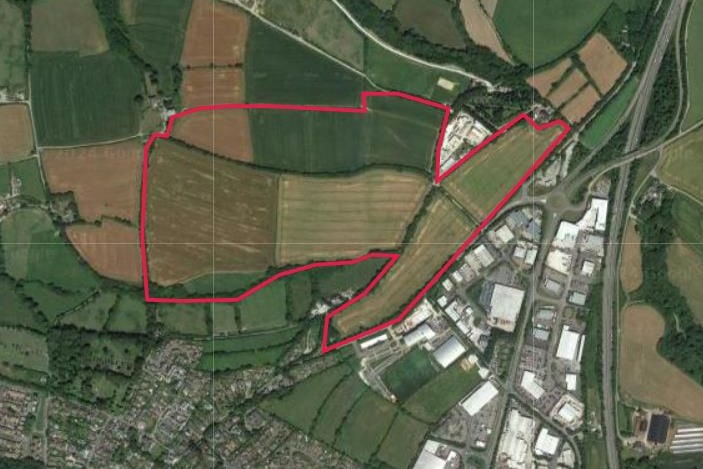EACH week, hundreds of planning applications come before Cornwall Council’s planning department, seeking to win approval for various plans right across the Duchy.
These plans can comprise of a number of different reasonings – ranging from permission to replace windows or listed building consent ranging up to large house building developments or changing of use of a building, for instance, from an office to a café, or flats.
Within this large and often complex system, there are a number of formats from which planning advice and approval can be sought.
These range from full applications where all the details which comprise a proposed development or work to a building are submitted, to outline applications, where further details are yet to be confirmed, for example, an outline application with reserved matters for appearance may not confirm the final proposed development but rather seek permission in principle.
An example of this is one for an outline permission for 20 dwellings on land with reserved matters for appearance and scale; the reserved matters would require further permission later for their inclusion.
Other types of applications include pre-application advice requests, where would-be developers submit often outline proposals to a local authority to ascertain whether it is likely to gain support or not prior to submitting a planning application.
The vast majority of applications are decided by planning officers employed by a local authority under ‘delegated powers’, meaning they do so on behalf of their employer, however, some applications are ‘called in’ by local councillors to be discussed at an area’s strategic planning committee meeting, meaning the final decision rests with a committee of councillors.
Concern over road layout of large housing expansion
A PRE-APPLICATION advice enquiry response by Cornwall Council to the developers behind a proposed mixed residential and commercial development of 678 homes on land at Callywith has raised concerns over the proposed road going through it.
Devonshire Homes submitted a pre-application enquiry to Cornwall Council seeking its views on its proposals for the site, covering a vast swathe of land to the east of the town which would form a big part of a long-planned ‘Callywith Urban Extension’.
The response to Cornwall Council was revealed after a Freedom of Information request challenge by Tindle Newspapers Cornwall, publishers of the Cornish Times, Cornish and Devon Post and Voice Newspapers series.
The council had initially declined the request citing the grounds of ‘commercial confidentiality’ despite the plans from Devonshire Homes being publicly available on the council’s planning portal, however it was later released after the decision was challenged.
The response from the Cornwall Council planning team revealed concerns over the impact of the development’s proposals in relation to the proposed road going through the development. With the application being a pre-application advice request, it forms the basis of feedback which can be used by the developer to formulate their final plans for a potential later full planning application.
The Highways Development Management team at Cornwall Council said they had concerns over the suitably of the proposed road, with the road which will go through the development anticipated to contribute a part of a long-anticipated ‘northern relief’ link road which was the subject of scrapped proposals over a decade ago.
In their response, the officer said: “I understand that the junction improvement at Old Callywith Road/Launceston Road has partially taken place therefore the requirement for this to be delivered prior the commencement of development, as set out in Policy Bd-UE4, has not necessarily been met in its entirety.
“A second linked roundabout is set out in strategy documents to serve as the site access, with separate arms for the residential, industrial/employment, Old Callywith Road and the Launceston Road/Old Callywith Road/A30 roundabout. This access should of be capable of accommodating the intended development and future growth beyond.
“The intent behind the second roundabout was to serve as the eastern gateway to the former Northern Distributor Road (NDR) scheme. Notwithstanding, the second roundabout remains within the strategy, however the form it takes in any final plan is open for discussion, acknowledging that the NDR is not a live scheme but that the wording of Bd-UE4 still requires the site access to accommodate the intended development and future growth beyond.”
The planning officer had concerns over the road’s design, continuing: “. There is a requirement to provide a main link to future development to the west of the site, ideally via a main east-west spine road of at least 6.5m in width, depending on whether this includes separate cycle lanes or not, it may require increasing to a maximum of 11.5m.
“It should also be tracked to ensure unimpeded bus access and areas reserved for the implementation of shelters/bus infrastructure where appropriate. I do not consider that the proposed layout of the internal carriageway meets the above aims, with no clear east-west link that would provide expediency for vehicles accessing future development parcels to the west.
“The existing layout, while suitable for the development in isolation, in providing a circular 6.5m route, is relatively convoluted in terms of accessing the potential link to the west.”
The officer concluded: “Even with the measures outlined above, the application is not well catered for in terms of walking and cycling provision on the desire line to the centre of Bodmin.
“With a steep gradient and lack of continuous, dedicated provision, not being conducive to non-motorized movements. The strength of this application in terms of sustainable transport will be its reliance on bus provision, therefore a suitable service and route through the site should be provided to engender sustainable transport trips.”
The developer was also advised that on the basis of 30 per cent of the properties being ‘affordable’ in their provision, they would be required to contribute approximately £319,200, representing £672 per dwelling towards the provision of primary care NHS services.
Elsewhere in the response to the developer, the council’s planning team advised that they had concerns over whether a ‘hybrid’ application, which would see a full application for the residential component of the development and only an outline application for the commercial component, including the construction of a care home.
The response from the planning department was as thus: “I have significant concerns, as expressed in our meeting, that the employment / commercial components of this large development, may be delayed or not delivered.
“Departure from the policy requirements may not be supported by officers or members as a consequence. An evolving detailed application should demonstrate how the employment areas of the development will be delivered as part of the phased residential development to ensure that a mixed used development as envisaged by this policy is brought forward.”
Application for self-build plot submitted
An application for the demolition of an agricultural building to be replaced with a self-build plot has been submitted to Cornwall Council.
The plans (reference PA25/02706) for a site at Kimberley Farm, Rosecraddoc, Liskeard comes after Cornwall Council told the applicant full planning permission was required.
• Keep up to date with the latest planning applications and other statutory notices (such as alcohol licensing and probates) that affect where you live by visiting our online Public Notice Portal – be the first to know by visiting www.publicnoticeportal.uk/cornish-times-series


.jpeg?width=209&height=140&crop=209:145,smart&quality=75)


Comments
This article has no comments yet. Be the first to leave a comment.